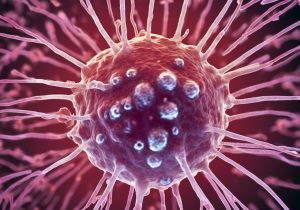It’s the summer of 2026, and your once normal life has turned into a waking nightmare. The air is heavy with fear, and the streets are eerily quiet. Gone are the bustling markets and crowded cafes; in their place are deserted public spaces and hastily erected quarantine zones. The world is now grappling with a new and terrifying reality—a mutated strain of the deadly Ankovirus, as contagious as Covid-19 but far more lethal. This is the future we never imagined, and it’s happening now.
Scenario Description:
On June 14, 2024, a deadly virus was discovered in the thawing permafrost of Siberia, emerging as a grim reminder of the ancient pathogens lying dormant beneath the ice. Scientists quickly identified the pathogen as a negative-sense single-stranded RNA virus of the order Mononegavirales, naming it Ankovirus. The initial outbreak was severe, with symptoms including acid reflux, fever, rash, abscesses, immune suppression, and internal bleeding. By August 21, 2024, over 9,000 people had died from this new virus.
The symptoms of Ankovirus are horrifying—patients suffer from intense pain, high fevers, and grotesque abscesses, with some succumbing to internal bleeding and organ failure.
However, the silver lining was that Ankovirus wasn’t as contagious as Covid-19, making it unlikely to become a full-scale pandemic. But in this “What If” scenario, we speculate about a terrifying mutation—a strain of Ankovirus that spreads as easily as Covid-19 but retains its high fatality rate of 15%. Such a mutation would have catastrophic consequences, leading to an unprecedented global crisis.
The Mutation and Rapid Spread:

In early 2026, reports begin to surface of a new strain of Ankovirus spreading through small communities in remote areas of Russia. Unlike its predecessor, this strain exhibits an alarming rate of transmission, rapidly spreading through close contact, airborne droplets, and even contaminated surfaces. The symptoms are the same, but the virus’s ability to spread has dramatically increased.
By mid-2026, the virus has crossed international borders, reaching densely populated areas in Europe, Asia, and North America. Governments scramble to contain the outbreak, but the virus spreads faster than containment measures can be implemented. Entire cities are placed under lockdown, international travel is suspended, and the global economy grinds to a halt.
Impact on Society:
Hospitals are overwhelmed as the number of infected skyrockets. Intensive care units are filled to capacity, and medical staff are stretched thin. The virus’s high fatality rate means that many of those who fall ill do not survive, and the death toll rises rapidly. The symptoms of Ankovirus are horrifying—patients suffer from intense pain, high fevers, and grotesque abscesses, with some succumbing to internal bleeding and organ failure.
Social order begins to break down as fear and panic spread. With supply chains disrupted, food and medical supplies become scarce, leading to hoarding and looting. Governments enforce strict curfews and quarantine measures, but compliance varies, and the virus continues its deadly march.
The Search for a Cure:
As the virus wreaks havoc, scientists around the world race against time to develop a vaccine or effective treatment. The process is fraught with challenges, as Ankovirus proves to be highly resistant to existing antiviral medications. Research labs work around the clock, but the mutation’s rapid spread means that any solution must be deployed quickly to be effective.
Global cooperation is essential, but geopolitical tensions complicate efforts. Some countries hoard vaccines and treatments, while others face shortages. The international community must grapple with ethical dilemmas about who gets access to limited resources and how to fairly distribute life-saving treatments.
Prevention and Mitigation:
To prevent the worst-case scenario, the global community needs to prioritize monitoring and containment of emerging pathogens. Thawing permafrost and other environmental changes are likely to release more ancient viruses, making it essential to invest in early detection and rapid response systems. Public health infrastructure must be strengthened, with increased funding for research into antiviral treatments and vaccines.
Public education campaigns are also crucial, teaching people about the importance of hygiene, vaccination, and compliance with quarantine measures. Governments must develop and regularly update pandemic preparedness plans, ensuring that they are ready to act swiftly in the event of an outbreak.

